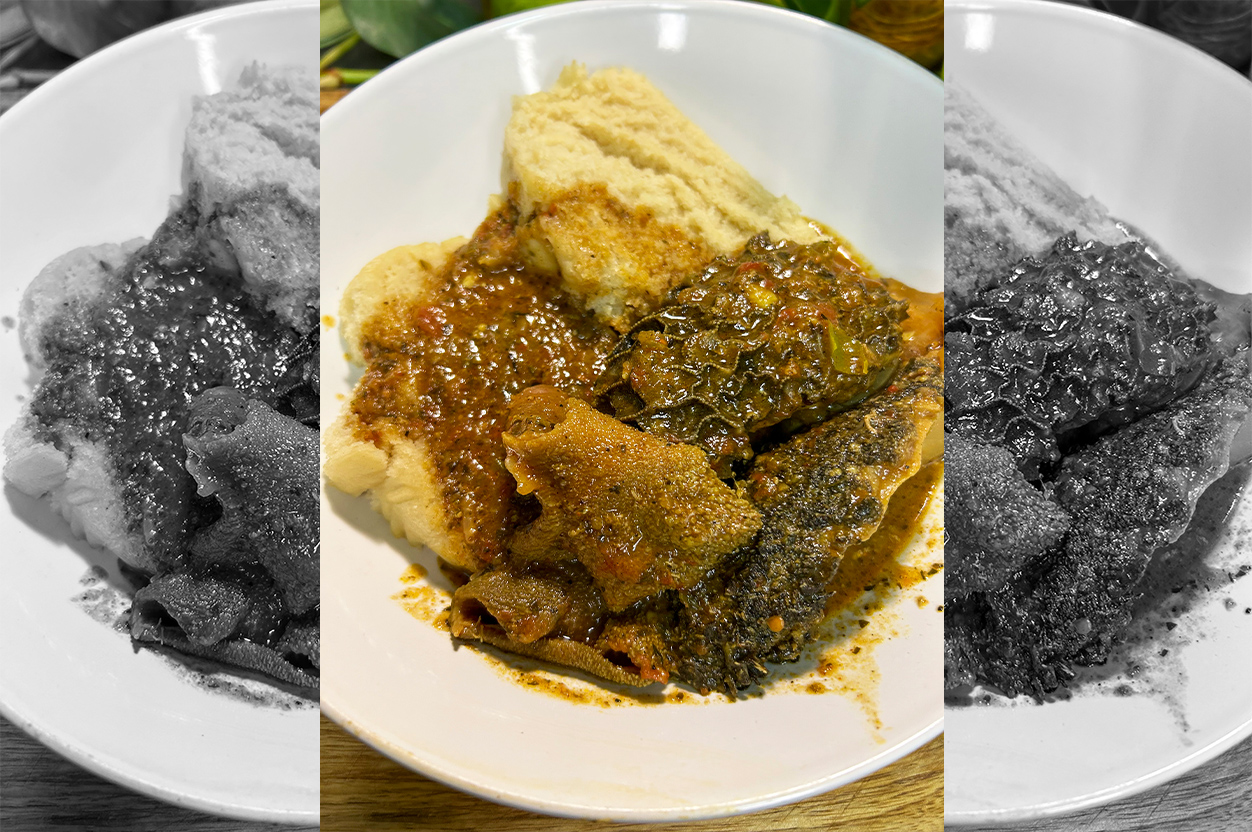Out of the frying pan into the fire. This maxim, so simple and punchy with its kitchen reference, immediately came to mind when I was inspired to make a complicated but rewarding dish. I was yearning for something warm and hearty to quell the bitterly cold winter in Joburg.
(By the way, armed with no evidence but anecdotal experience, I conclude that this year’s winter is colder than previous ones.)
The complicated dish I dared to make was mala mogodu, also known as tripe – or the insides of a cow or sheep. It’s another beloved South African dish, adding to my repertoire of recent attempts to make the country’s other treasured food items.
There was amagwinya and dombolo, recipes you can read below and try, two months before the start of Heritage Month in South Africa.
Read more in Daily Maverick: Fail! How I shamed myself with my amagwinyas-of-mass-destruction
Read more in Daily Maverick: Redemption! I came back stronger with light, fluffy dombolo
I started this column with a fib by describing mogodu as a complicated dish. It is a simple dish to prepare – once you cross the important hurdle of cleaning it before cooking.
If you are squeamish and easily repulsed, the cleaning process will be brutal. After all, the stomach lining of a cow or sheep might still have bits of sand and undigested food. However, some people believe that the mogodu shouldn’t be thoroughly cleaned as the bile and undigested food add a grainy (also earthy) texture and flavour.
Dear reader, let it be known that I do not subscribe to this school of thought as I put my mogodu through at least three wash cycles in the kitchen sink. (Pro tip: add vinegar to your water in the sink. It keeps flies at bay. They are usually drawn to raw and uncovered mogodu).
I’ve heard bizarre stories about obsessive cleaners putting the mogodu in a washing machine and adding bleach to the water to run multiple wash cycles. I am all for convenience and outsourcing arduous tasks, but this is taking cleaning mogodu to unfathomable extremes.
The cleaning part was tedious, taking me about three hours or until the sink water was clear and I couldn’t feel particles of sand in the mogodu. I have a newfound respect for my mother, who displayed patience and grace when cleaning mogodu while I watched her at the kitchen table. I even had a pernicious moment of yelling at her to stop cleaning mogodu and cook it because I was hungry. This was immediately followed by a snotklap across my face, and later, karma from the universe, as I found myself in the same laborious mogodu-cleaning situation.
I owe my mother an unreserved apology.
(Serves at least four people. Mogodu is best served with a greedy portion of dombolo.)
Ingredients
1 kg beef tripe. (Adding cow heels is optional but recommended.)
Water
1 onion, chopped
1 red, green or yellow pepper, chopped
2 Tbsp paprika
2 Tbsp ground black pepper
2 Tbsp of curry powder
2 beef-flavoured stock cubes
2 Tbsp crushed garlic
2 Tbsp mixed herbs
2 Tbsp chilli powder
2 Tbsp parsley
Plus: I threw a lot of available spices into the pot, without exact measurements. I’m experimental with my cooking and hope for the best. Interpret this as you wish.
Method
Wash and cut your tripe into pieces. Cover the mogodu with water, bring to a boil and simmer for three hours. Make sure the water in the pot never runs dry. Top it up when necessary or the mogodu will burn.
When the mogodu is soft and tender, add onion and pepper. Let the vegetables cook for 30 minutes before adding paprika, ground black pepper, curry powder, beef-flavoured stock cubes, crushed garlic, mixed herbs, chilli powder and parsley to taste.
Add more water to simmer for an hour. At this point, the water would have morphed into a thick stew. DM
This article is more than a year old
TGIFood
The case for stewed tripe or mala mogodu during winter
Love it or loathe it for its smell, mogodu packs a unique texture and flavour. Once you’re past the thought of eating the stomach lining of a sheep or cow, mogodu can be hearty and provide warmth during winter.





